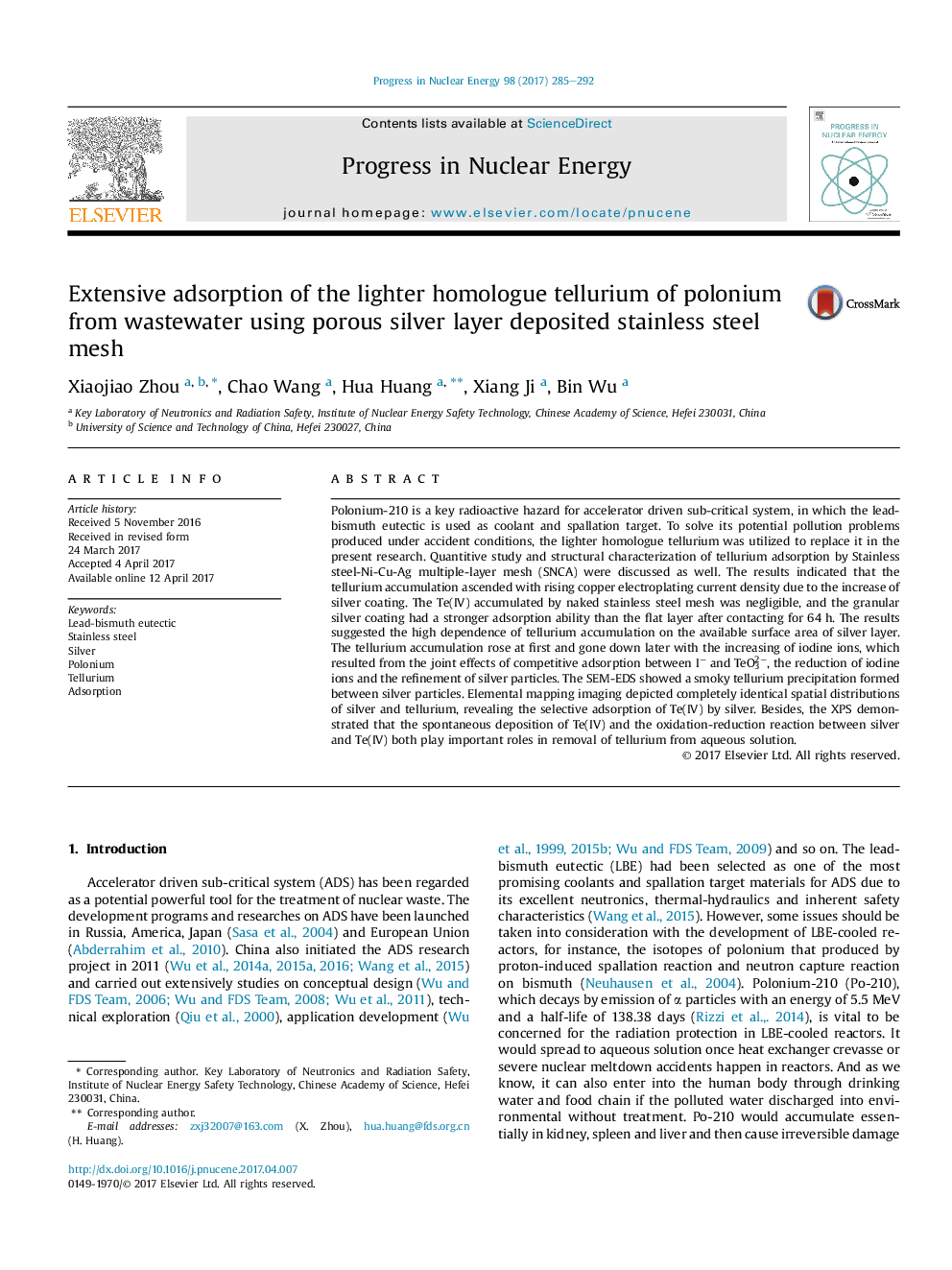| کد مقاله | کد نشریه | سال انتشار | مقاله انگلیسی | نسخه تمام متن |
|---|---|---|---|---|
| 5478068 | 1521740 | 2017 | 8 صفحه PDF | دانلود رایگان |
عنوان انگلیسی مقاله ISI
Extensive adsorption of the lighter homologue tellurium of polonium from wastewater using porous silver layer deposited stainless steel mesh
ترجمه فارسی عنوان
جذب فراوان تلوریم همولوگ بلورین پولونیوم از فاضلاب با استفاده از لایه نقره ای متخلخل ساخته شده از مش فولاد ضد زنگ
دانلود مقاله + سفارش ترجمه
دانلود مقاله ISI انگلیسی
رایگان برای ایرانیان
کلمات کلیدی
سرب بیسموت ایموتکتیک، فولاد ضد زنگ، نقره، پولونیوم، تلوریم، جذب،
موضوعات مرتبط
مهندسی و علوم پایه
مهندسی انرژی
مهندسی انرژی و فناوری های برق
چکیده انگلیسی
Polonium-210 is a key radioactive hazard for accelerator driven sub-critical system, in which the lead-bismuth eutectic is used as coolant and spallation target. To solve its potential pollution problems produced under accident conditions, the lighter homologue tellurium was utilized to replace it in the present research. Quantitive study and structural characterization of tellurium adsorption by Stainless steel-Ni-Cu-Ag multiple-layer mesh (SNCA) were discussed as well. The results indicated that the tellurium accumulation ascended with rising copper electroplating current density due to the increase of silver coating. The Te(IV) accumulated by naked stainless steel mesh was negligible, and the granular silver coating had a stronger adsorption ability than the flat layer after contacting for 64Â h. The results suggested the high dependence of tellurium accumulation on the available surface area of silver layer. The tellurium accumulation rose at first and gone down later with the increasing of iodine ions, which resulted from the joint effects of competitive adsorption between Iâ and TeO32â, the reduction of iodine ions and the refinement of silver particles. The SEM-EDS showed a smoky tellurium precipitation formed between silver particles. Elemental mapping imaging depicted completely identical spatial distributions of silver and tellurium, revealing the selective adsorption of Te(IV) by silver. Besides, the XPS demonstrated that the spontaneous deposition of Te(IV) and the oxidation-reduction reaction between silver and Te(IV) both play important roles in removal of tellurium from aqueous solution.
ناشر
Database: Elsevier - ScienceDirect (ساینس دایرکت)
Journal: Progress in Nuclear Energy - Volume 98, July 2017, Pages 285-292
Journal: Progress in Nuclear Energy - Volume 98, July 2017, Pages 285-292
نویسندگان
Xiaojiao Zhou, Chao Wang, Hua Huang, Xiang Ji, Bin Wu,
